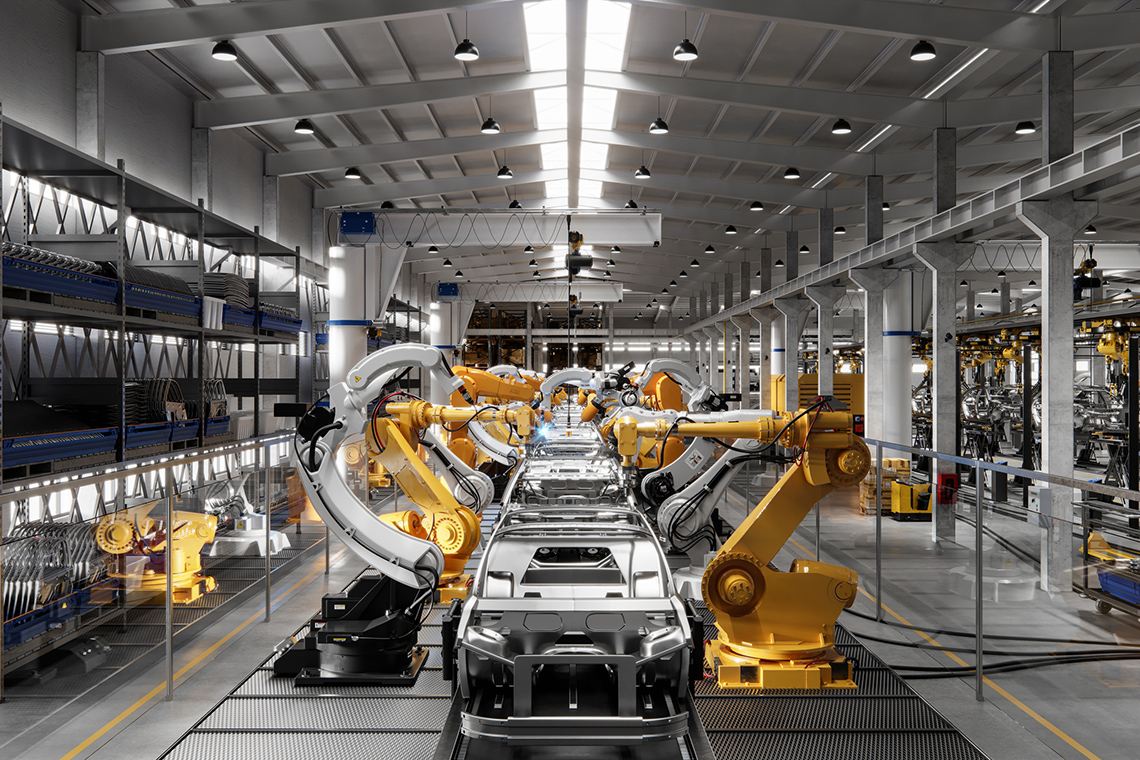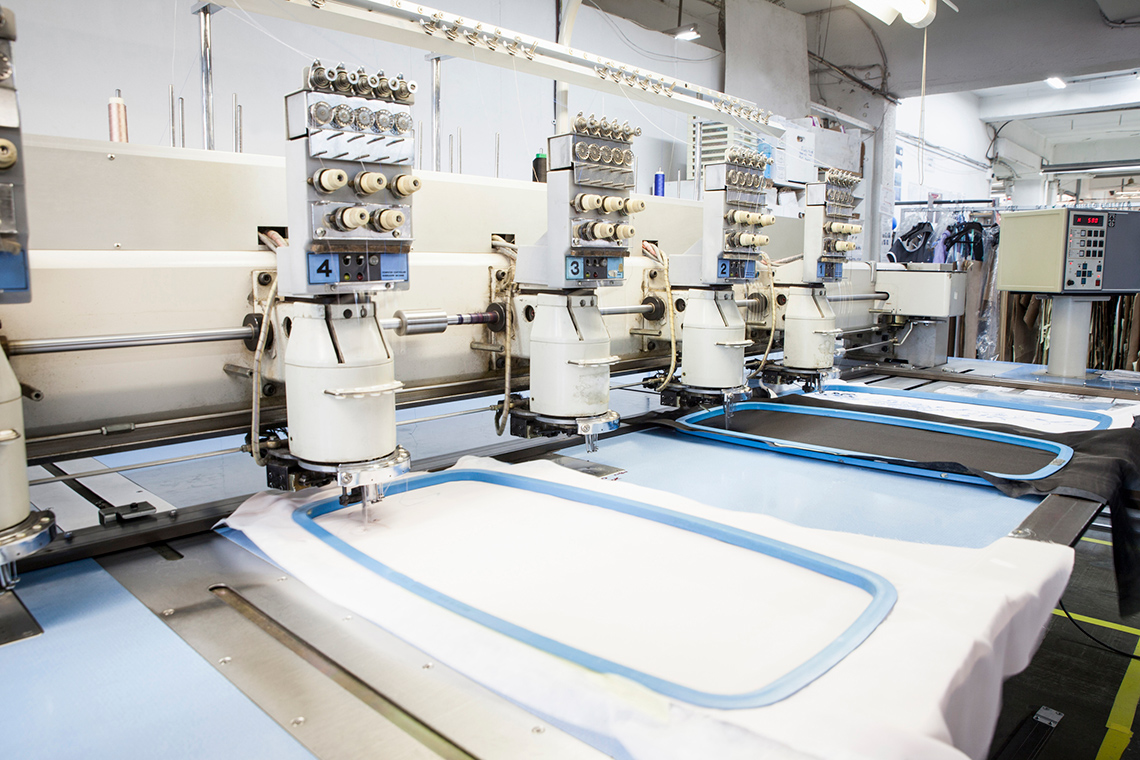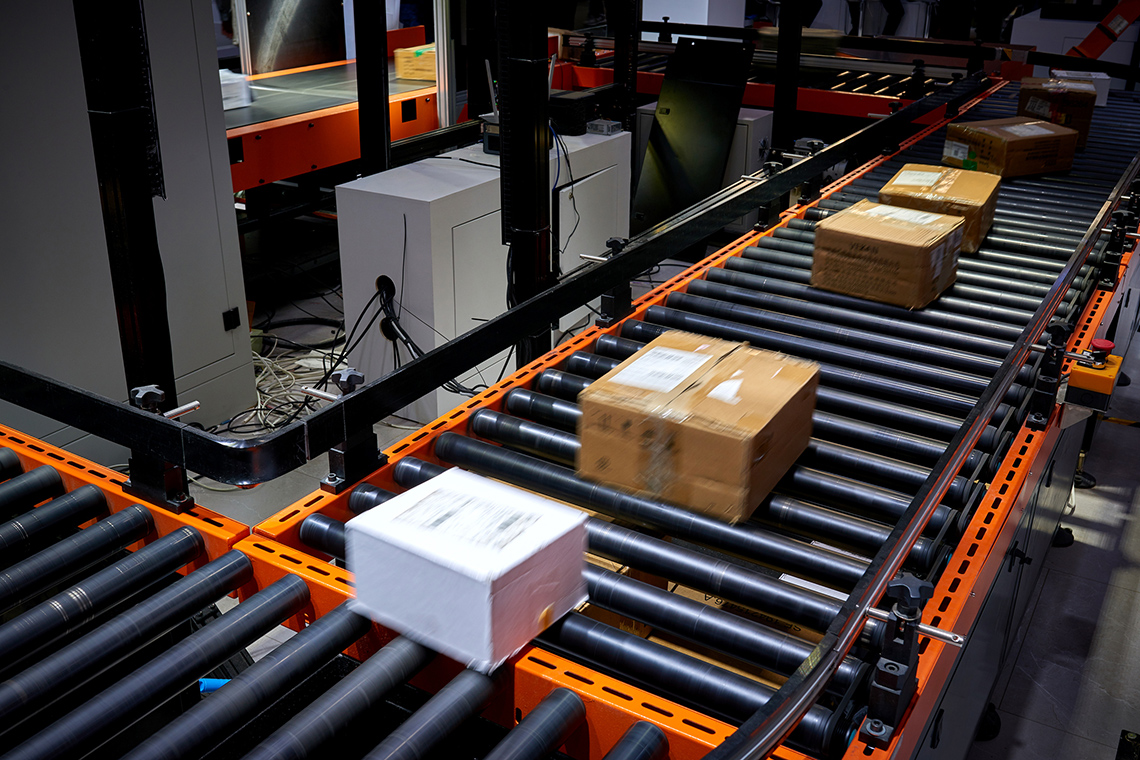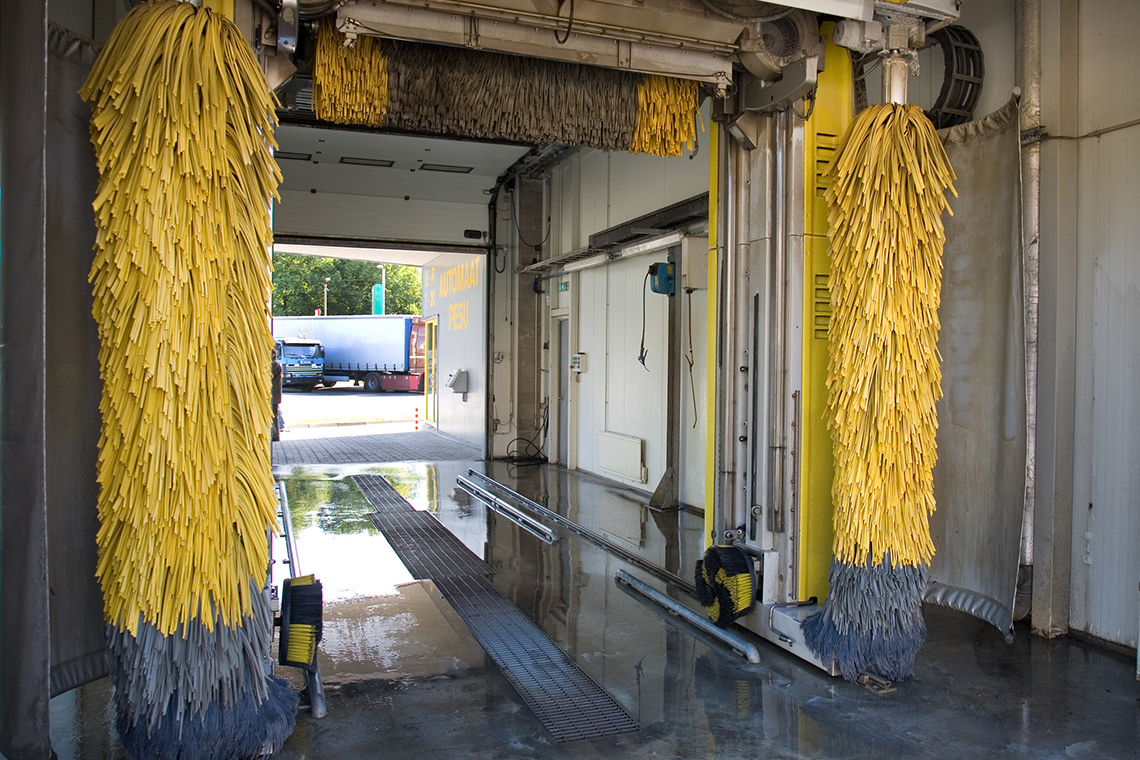Minds On
Assembly line
Let’s check out the following image:

Brainstorm
Brainstorm
After exploring the image, brainstorm about the following questions:
- What role do robotic arms have in the assembly line?
- What industries use automation?
- How can automation be used in car production?
Record your ideas in a notebook or another method of your choice.
Action
Automated systems
Automated systems are making an increasing impact on a number of industries. They are able to increase output and lower costs of production.
An automated system is a system for controlling or operating a process with electronic or mechanical devices that run continuously without human input.
Automated systems have three basic components:
- power to operate the system and complete a process
- a process that is directed by instructions
- a control system
Press the following tabs to explore various types of automation systems that are used in different industries.
The assembly line was an important automation process for the manufacturing of cars.

Automation has led to the mass production of clothing or other woven fabrics.

Automated texts are also a form of automation. The source sends out a message to a large number of cell phones, usually with the goal of sharing an idea or selling a product.

Automation allows for the rapid boxing of packages.

Car washes use automation. The car is sprayed with water, shampooed, and then dried while riding on a conveyor belt.

Now that we have explored the ways automation is used in a number of industries, let’s consider the potential impacts of automation.
Select the correct answer, then press ‘Check Answer’ to see how you did.
Pause and Reflect
Pause and reflect
Reflect on the following questions
- What are the benefits of automated systems?
- What do you think some of the challenges of using automated systems might be?

Record your ideas in a notebook or another method of your choice.
Consider the potential social, economic, and environmental impacts when recording your response.
Automated processes
Baking
One industry that has been impacted by automation is baking. Each step of the process involves automation. From the mixing of the batter to the pouring of the batter, shaping of the baked good, and the layering of the icing–all parts can be done by automation. The process is completed through a series of steps and instructions so that the machines involved perform the same task repeatedly, until the required amount of baked goods has been created.
The initial investment in the equipment can be quite costly, but over time, the mass production of baked goods, such as cakes, will make the investment worthwhile for the owner of the baking company. While there are many benefits to using automation, there are also some concerns; for example, job loss can occur, as human positions are replaced with machines.

Student Success
Think
- How does automated cake-making increase output and lower production costs?
- What challenges can automated and mass-produced baking present for small scale bakeries?
Record your ideas in a notebook or another method of your choice.
If possible, share your ideas and thoughts with a partner.
Let’s code!
A flowchart is a diagram that explains a system, process or algorithm. An algorithm is a set of rules or process that is followed in calculations.
Let’s explore the following diagram in order to understand how we can create a flowchart for a set of instructions. In this example, the flowchart explains the steps and choices that someone might make when eating lunch.

The flowchart reads as follows: Start program. Person picks up sandwich and takes a bite. Program asks person for input if they are still hungry or not. Program then decides what to do if the person is hungry or not. If the person is hungry then the program will go back to picking up sandwich and repeat the code until the answer is not hungry. If the person is not hungry the program will ask the person if they want a drink. If the answer is no, then the program will output a message saying, “Lunch is finished!” and end the program. If the answer is yes, then the program will go ask the person if they want water or juice. And then the program will decide what to do if the person wants water or juice. If the person wants water the person will pick up the water to drink, then the program will output a message saying, “Lunch is finished!” and end program. But if the person wants juice, they will pick up the juice to drink and then the program will output a message saying, “Lunch is finished!” and end program
Student Tips
Student tips
Explore the following chart describing the symbols you may want to use in your flowchart to represent various actions.

An anchor chart describing the different symbols used in a flowchart. Oval symbol. An oval is used for the start and end of a program. Arrow symbol. A line with an arrow is used to illustrate the relationship between the shapes in the flowchart. A parallelogram symbol. A parallelogram is used for the inputs or outputs of a program. A rectangle symbol. A rectangle is used to represent a process. A diamond symbol. A diamond is used when a decision needs to be made to run the appropriate part of the program based on the information provided. This can be used for repeated and conditional parts of the code.

Try It
Your turn!
Your task is to design a flowchart coding program that will show an automated process that will ensure every cupcake receives a specified type of icing, which includes either vanilla or chocolate. You could also choose another item of your choice, if you prefer.
The cupcakes arrive on the conveyor belt in groups of five at a time. The automated order will be five vanilla, followed by five chocolate, followed by five vanilla, and then five chocolate. The process continues until a total of 20 cupcakes are iced. The process may be repeated as many times as desired.
Reflect on the previously explored flowchart and its elements to guide your program.
Record your flowchart in a notebook or another method of your choice.
Press ‘Let’s Check!’ to access an example of how to complete the program.

The flowchart reads as follows: Start program. REPEAT Programmer inputs that 5 cupcakes that are to receive vanilla icing. UNTIL 10 vanilla cupcakes (or two groups of 5) have been iced and 10 chocolate cupcakes (or two groups of 5) have been iced reaching a grand total of 20 cupcakes. ASK programmer if they want to automate for vanilla iced cupcakes or chocolate iced cupcakes and input IF yes then go ahead and ice 5 vanilla cupcakes. IF no then… ASK programmer if they want to automate for chocolate iced cupcakes and input IF yes then go ahead and ice 5 chocolate cupcakes. IF no then go to finish. ASK programmer if the total of 20 cupcakes have been iced and input IF yes then go to then finish IF no then go repeat entire process until 20 cupcakes have been created and input End IF programmer says No to repeating the automated process. OUTPUT Message “Cupcakes have been iced!” END
Press ‘Let’s Check!’ to access an alternative of how to complete the program.
Another way of exploring the flowchart would be the following:
Cupcakes arrive at the icing decorating automated machine.
Program asks for input if it is to use vanilla or chocolate icing. Program then decides which icing to place on 5 cupcakes.
If the cupcake is slated for vanilla icing, then the program will go back and repeat the code until the vanilla icing is complete.
If the answer is no, then the program will output a message if the next 5 cupcakes should be iced with chocolate.
If the cupcake is slated for chocolate icing, then the program will go back and repeat the code until the chocolate icing is complete.
If the total icing of 20 cupcakes is complete, then the program will output a message saying, “Cupcakes have been iced!” and end itself.
Consolidation
Test it out!

Before you share your unplugged coding task, you may use the following checklist to guide and test your code out!
Did you…?
Pause and Reflect
Pause and reflect
- What impact might automated systems have on future industries?
- Think of an example of an industry which might benefit from automated systems. How and why might automated systems be beneficial? How might automatic systems create some challenges?
- What did you enjoy about creating your coding program? What would you like to continue to practice?
Record your ideas in a notebook or another method of your choice.
Reflection
As you read the following descriptions, select the one that best describes your current understanding of the learning in this activity. Press the corresponding button once you have made your choice.
I feel…
Now, expand on your ideas by recording your thoughts using a voice recorder, speech-to-text, or writing tool.
When you review your notes on this learning activity later, reflect on whether you would select a different description based on your further review of the material in this learning activity.